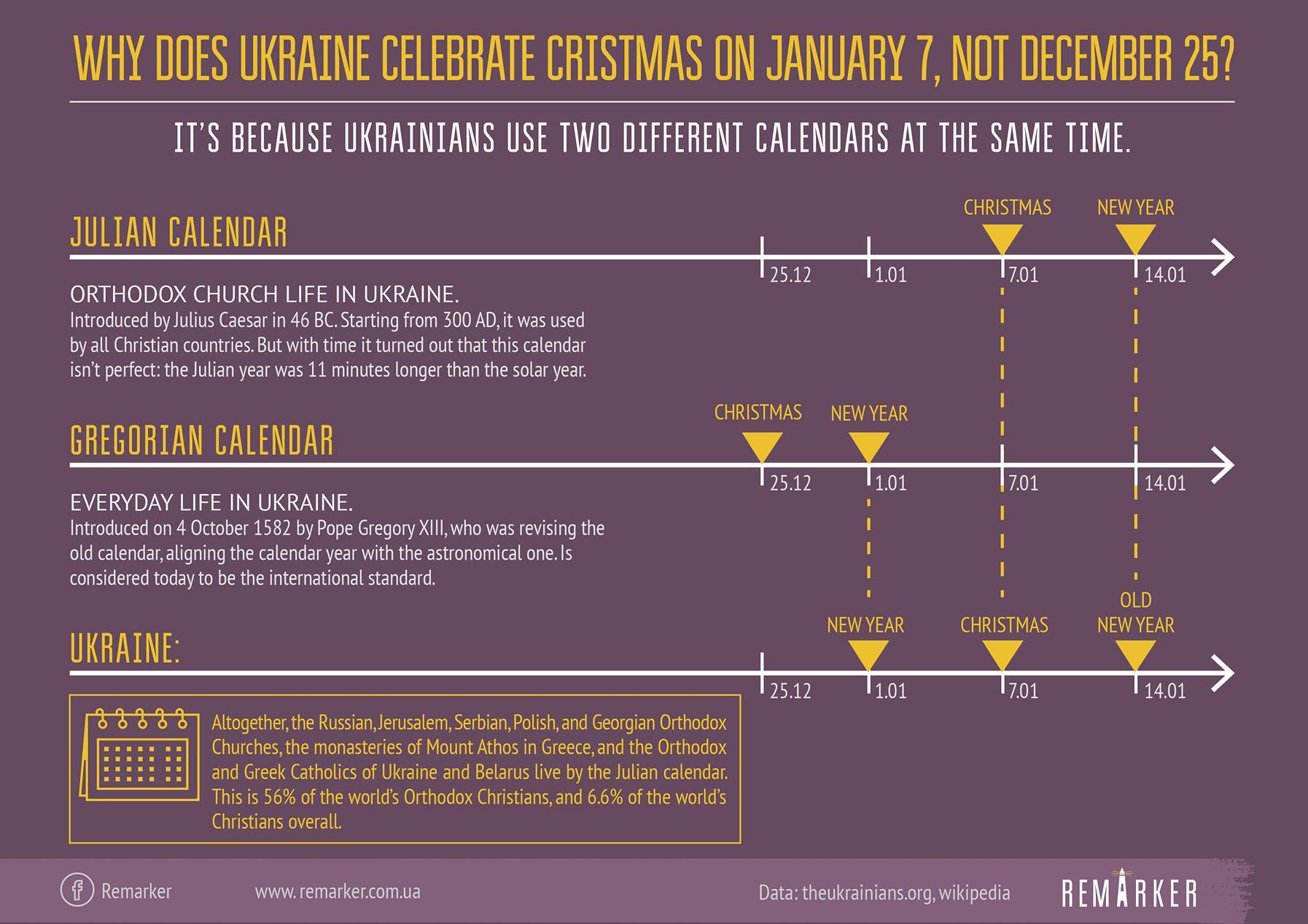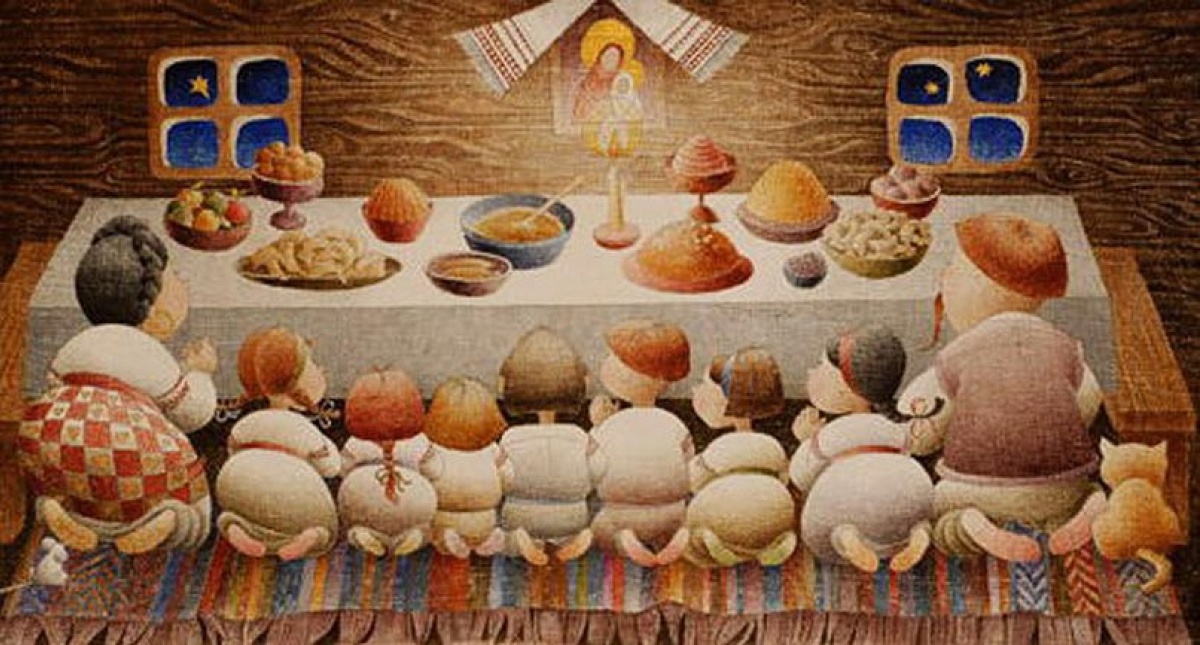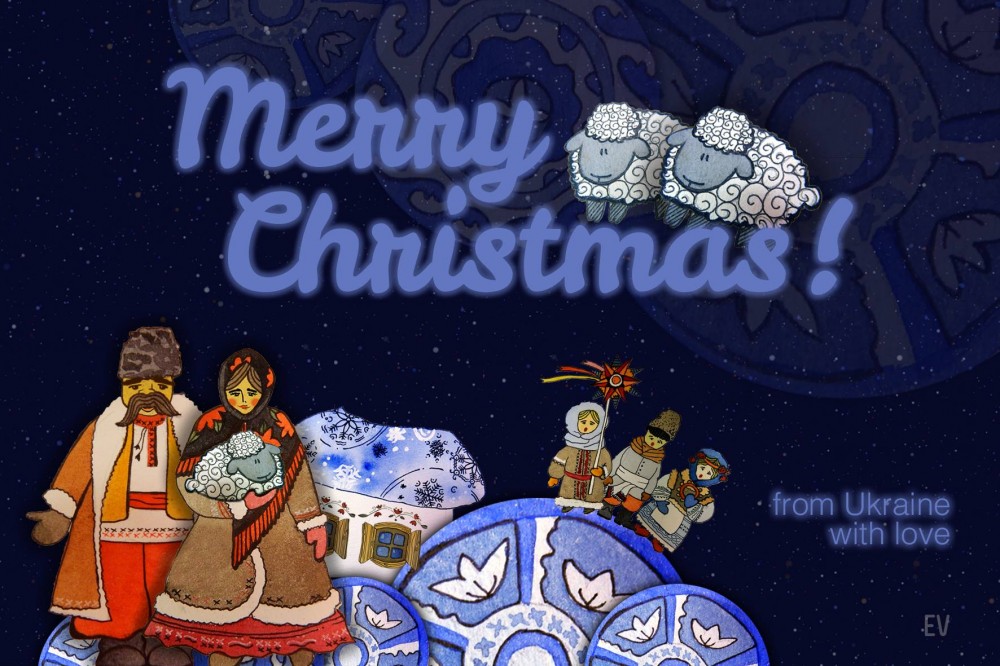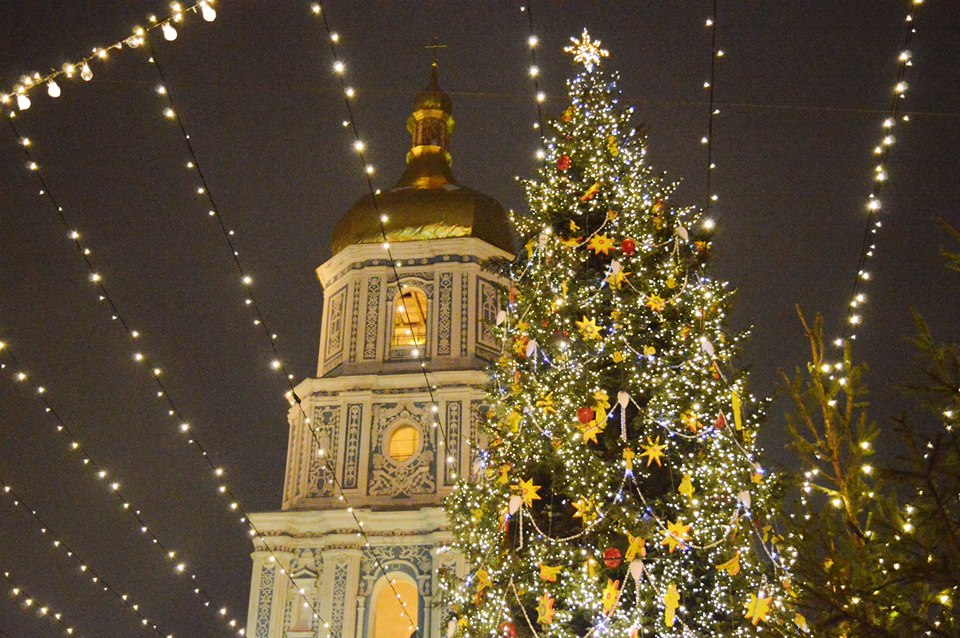
The Julian and Gregorian calendars
The Julian calendar
was introduced in 46 BC by Julius Caesar, hence its name. At that time, the calendar was the most progressive and accurate. All Christian countries were using it starting from the IV century AD. But with time it turned out that this calendar wasn't perfect: the Julian year was 11 minutes longer than the astronomical one. Those "extra" 11 minutes amounted to one extra day every 128 years. And after 1,500 years, the calendar lagged a whole 10 days, which was the reason for the introduction of the renewed Gregorian calendar in the XVI century.
The Gregorian calendar was introduced on 4 October 1582 by Pope Gregory XIII. This calendar is still recognized by the world as the international standard. It takes into account the inaccuracy of the Julian calendar: the average duration of the year constitutes 365 days, 5 hours, 49 minutes, and 12 seconds.

Italy, France, Spain, Portugal, and Lithuanian-Polish Commonwealth were the first to adopt the calendar. According to the Pope's innovation, 15 October came right after 4 October in 1582 to correct the Julian calendar's error.
The Patriarch of Constantinople, under whose jurisdiction most Ukrainian lands were at that time, at first agreed to transition to the new calendar and even sent the Pope a letter of confirmation that starting from 1584 the Churches of his jurisdiction will start using the new calendar. The Orthodox communities of "Moldova, Lyachia, Rus, Georgia, and many other lands" were part of this jurisdiction. But with time, another viewpoint started dominating in the Patriarch's circle and the proclaimed transition never happened.
Ukraine adopts new calendar in 1918
The Gregorian calendar was eventually adopted in Ukraine, but a few centuries after it was introduced in other countries, and only at the political level. After the Russian and Austro-Hungarian empires disintegrated and Ukraine entered a short-lived phase of independence in the Ukrainian National Republic, the Gregorian calendar was adopted on 16 February 1918, making the date automatically 1 March 1918. Soviet Russia adopted the Gregorian calendar a month before that. The new calendar was quickly picked up in secular life, but the Russian Orthodox Church, and the Ukrainian and several other Churches, never adopted it.
Roughly half of the Orthodox world lives by Julian calendar
While Christmas on January 7 is often called the "Orthodox Christmas," almost half of the world's Orthodox Christians celebrate Christmas on December 25, alongside with most of the world. Today, the Russian, Jerusalem, Serbian, Georgian, and Polish Orthodox Churches live by the Julian calendar, as well as the monasteries on Mount Athos in Greece and the Orthodox and Greek Catholic Christians of Ukraine. This makes up roughly 56% of the world's Orthodox Christians, and 6.6% of all Christians (12% of the world's Christians are Orthodox).6.6% of the world's Christians live by the Julian calendar
Some Orthodox communities have chosen to celebrate Christmas by the "new style", like the Latvian Orthodox Church of the Moscow Patriarchate, which starting from the 1920s holds Christmas celebrations on December 24-25.
Orthodox countries are introducing an additional state holiday, on 25 December as well as 7 January
Moldova, Belarus, Albania have two state holidays - on December 25 and January 7. This allows citizens to choose when to celebrate one of the largest Church holidays. As a rule, society first celebrates both dates, and then the new tradition replaces the old one. However, the conservative part of society maintains that this would mean eliminating the old, "real" Ukrainian (and church) traditions that are unique to Ukraine and eastern Christianity. At the same time, adepts of change stress that it makes sense for all Christians to celebrate Christmas on the same date and that it makes no sense to hold on to an astronomically outdated calendar.
Ukraine could continue living by two calendars at the same time. But sooner or later, moving the date of celebration of Christmas would be inevitable - if the Church continues living by the Julian calendar, the "extra" minutes will lead to an "extra" day starting from 2100, and Christmas would have to be celebrated on January 8, not January 7. However, it's possible to ignore the "extra" days, as they were ignored the last few times, but that would mean essentially that the Julian calendar just becomes the Gregorian + 14 days, negating its astronomical essence.
This year, a draft law on designating December 25 as a state holiday alongside January 7 was submitted to the Ukrainian parliament. Having two state holidays would allow parishes to choose themselves what date to celebrate Christmas on. A similar practice exists in Greek Catholic parishes outside Ukraine - today, some parishes still celebrate the date on January 7, while most stick to December 25.
Update: In late 2017, December 25 became an official state holiday, making Ukraine a country with two official Christmas days:
Read More:
- A Night of Faith: Ukrainian Christmas Eve
- Carol of the Bells & the fight for national dignity. Lessons from the history of the Ukrainian National Republic
- All you wanted to know about Ukraine in one book and on one YouTube channel
- A Ukrainian composer’s gift to the world of Christmas music
- Ukraine gets two Christmases – December 25 and January 7
- Celebrating Vodokhreshchа (Epiphany), the last of the Ukrainian Christmas and New Year cycle
- Catholic priest reconstructs Ukraine’s prehistoric Christmas traditions





